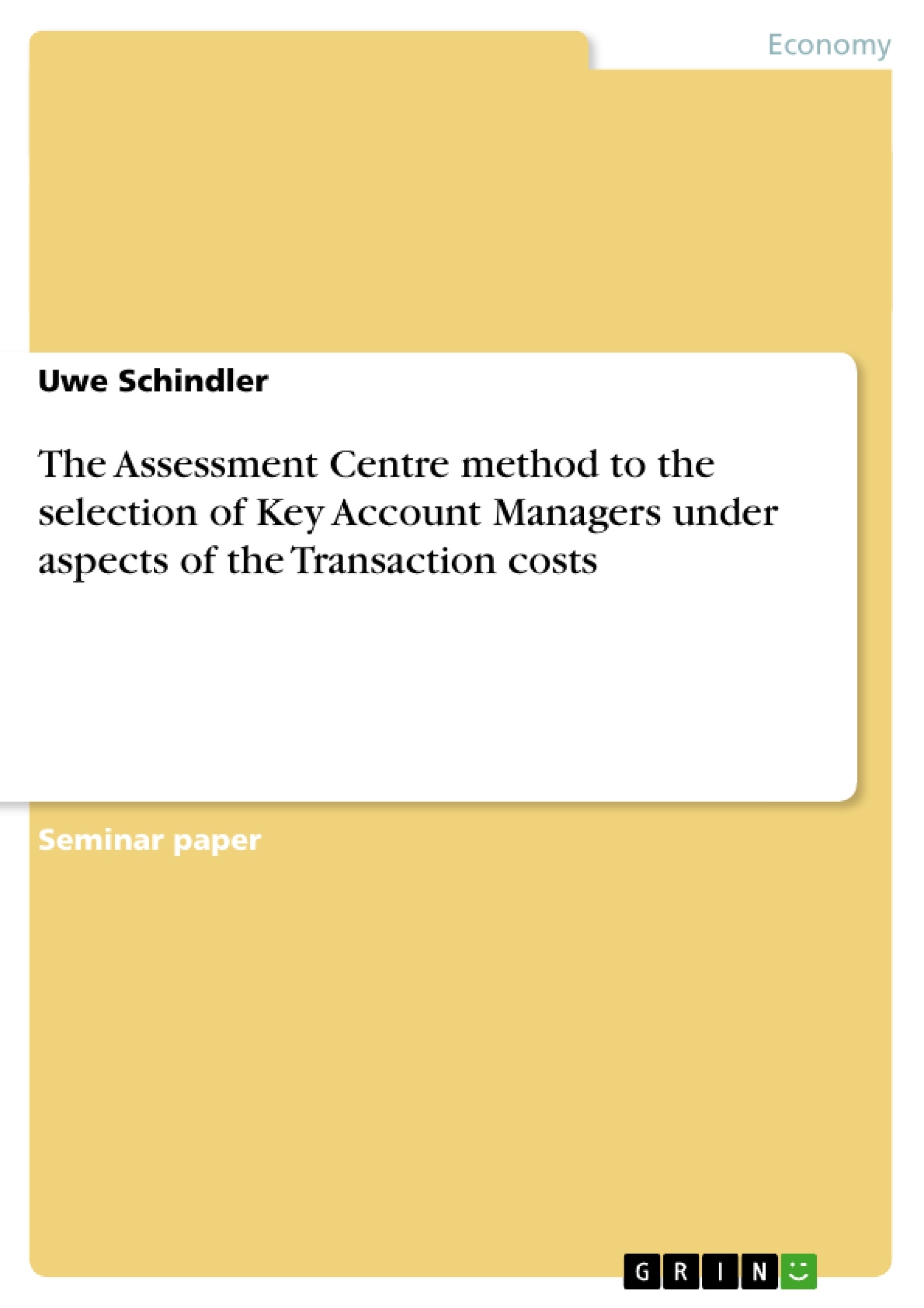Executive Summary
To create long-term and sustainable successful relationships to key customers (Key accounts) are one of the main figures in successful business in industrial sales and marketing. To solve this challenge special Key Account Managers with special key qualifications are necessary. To select and recruit these Key Account Managers the tool of the Assessment Centre is helpful. Standardized Assessment Centre does not lead to a selection of the most of the key qualifications of Key Account Managers, because no standardized tests exist. Therefore companies using the Assessment Centre method to select Key Account Managers have to design the Assessment Centre in that kind that it measures the necessary key qualifications and tasks. All the necessary activities regarding the pre-phase of contractual conclusions, like the Assessment Centre to the selection of the right person, develop Transaction costs which can have an impact to contractual transaction after a decision as well. How to design the AC to measure the key qualifications of Key Account Managers and to achieve by this way a minimization of the TAC is the main question answered in the assignment.
Inhaltsverzeichnis (Table of Contents)
- Introduction
- Transaction costs theory
- Key Account Management
- Term, importance, basic principle, and goals.
- Task spectrum and instruments of the Key Account Manager.
- Demarcation of the KAM from conventional sale…........
- Assessment Centre
- Characteristics and participants
- Components of the AC
- Assessment Centre to select Key Account Managers.......
- Selected relevant TAC of the AC with the selection of KA-M
- Some aspects of application of the AC to reduce TAC
- Conclusion............
Zielsetzung und Themenschwerpunkte (Objectives and Key Themes)
This assignment aims to explore the use of the Assessment Centre (AC) method in selecting Key Account Managers (KA-Ms) with a focus on minimizing Transaction Costs (TAC). The paper utilizes the TAC theory, examines the fundamental aspects of Key Account Management (KAM), and analyzes the AC method by evaluating relevant scientific literature.
- The impact of Transaction Costs on the selection of Key Account Managers
- The importance of minimizing Transaction Costs in the selection process
- The role of the Assessment Centre in identifying key qualifications of Key Account Managers
- The design of an effective Assessment Centre for selecting Key Account Managers
- The application of the Assessment Centre method to reduce Transaction Costs
Zusammenfassung der Kapitel (Chapter Summaries)
Chapter 2 provides a concise overview of the Transaction Costs theory, emphasizing its relevance to the selection of Key Account Managers. This chapter explores the theory from two distinct perspectives.
Chapter 3 offers a comprehensive introduction to Key Account Management, focusing on its definition, significance, underlying principles, and objectives. The chapter proceeds to delve into the specific tasks and essential instruments required by Key Account Managers, concluding with a comparative analysis that differentiates Key Account Management from conventional sales approaches.
Chapter 4 delves into the Assessment Centre (AC) method, initially covering its history, range of applications, and defining characteristics. It further examines the participants involved in the AC process and concludes with an exploration of the diverse components that constitute an AC.
Chapter 5 examines the application of the Assessment Centre (AC) method in selecting Key Account Managers, highlighting the relevant Transaction Costs (TAC) associated with this process. The chapter concludes by presenting practical strategies for reducing TAC through strategic implementation of the AC method.
Schlüsselwörter (Keywords)
Key Account Management, Key Account Manager, Assessment Centre, Transaction Costs, selection process, key qualifications, minimizing costs, strategic implementation.
- Quote paper
- Dipl.-Kfm. (FH) Uwe Schindler (Author), 2008, The Assessment Centre method to the selection of Key Account Managers under aspects of the Transaction costs, Munich, GRIN Verlag, https://www.grin.com/document/92369



